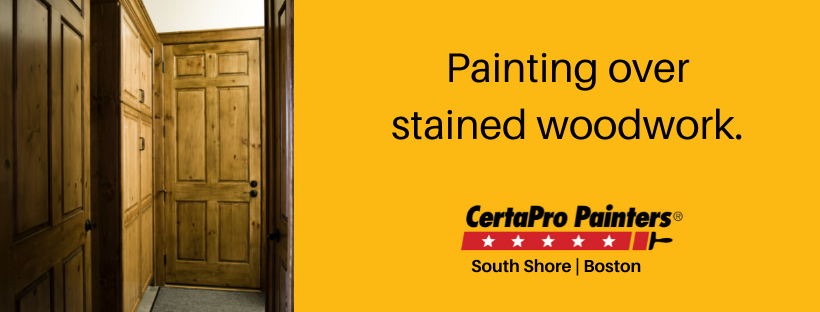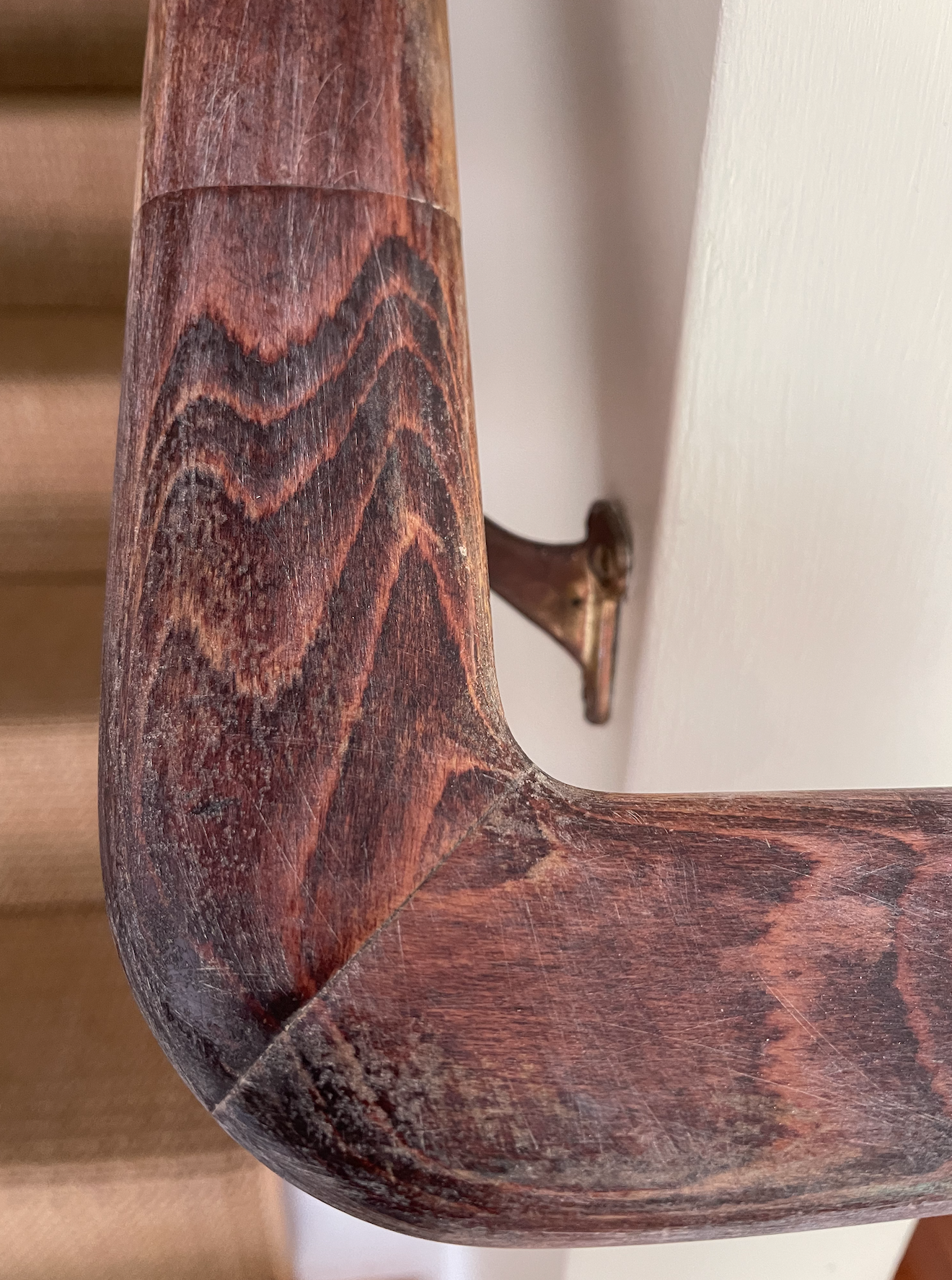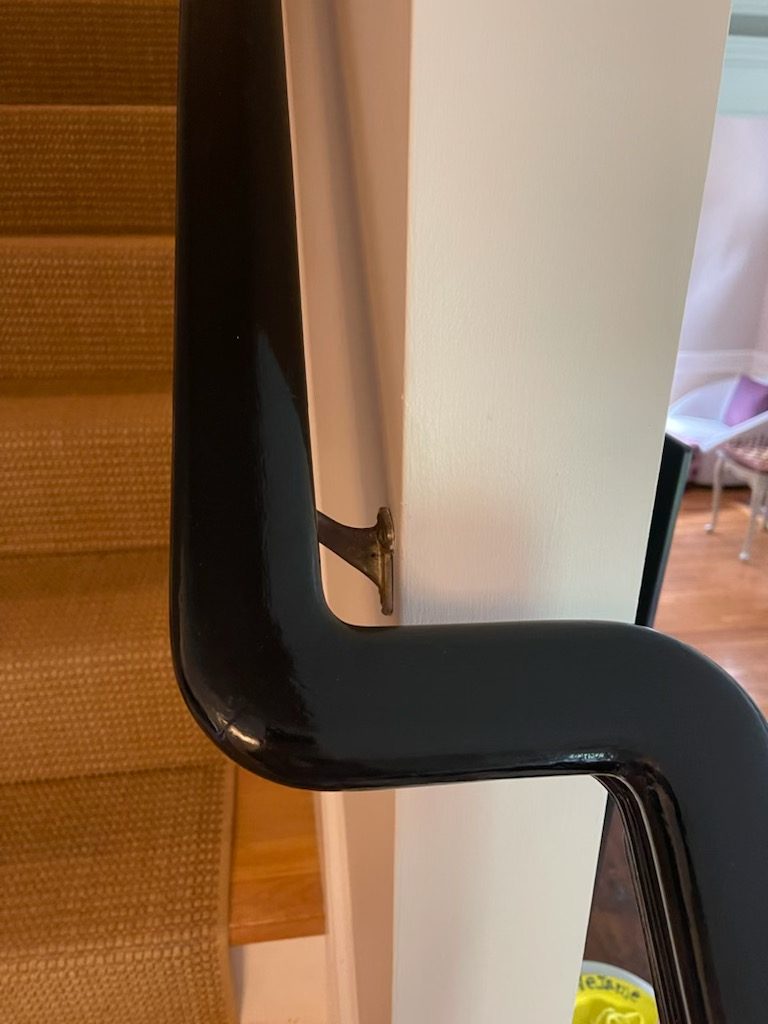
Painting over your interior stained woodwork, trim, doors and banisters.
Posted on June 28, 2021
Painting over Stained Interior Wood
Stained wood trim was prevalent in previous decades but makes your home feel dark and dank. Here’s our process to paint over the stained wood so your home’s interior is fresh and feels lighter and more open:
Here’s how to paint over stained wood:
Deglossing the surface of the stained wood:
We must sand the existing stained wood with 150 grit sandpaper to de-gloss the surface in order for the primer and new finish coats to “take.” You do not need to sand off all of the stain, just enough to reduce the gloss and allow the paint to grab better. Once this is done, clean the wood with a clean tack cloth to remove all of the dirt and debris before priming.
Applying a stain-blocking primer:
Next, we apply a stain-blocking primer – we like Binz. This primer has a powerful odor; however, since it dries quickly, the scent will dissipate. Until the smell has resolved, keeping people with asthma and small children and pets away from the space is recommended

A word about wood knots:
2 coats of Zinsser BIN Brand White Primer will cover knots initially, and we recommend putting at least two finish coats of paint over the primer.
Zinsser BIN Primer works because the shellac in the primer seals the stained and knotted wood surfaces to prevent the wood’s dark-colored tannins from bleeding through to the paint. While we can’t stop the wood from producing tannins, Zinsser BIN helps create a barrier between the wood and the final topcoat to help prevent the wood tannin from seeping through to the topcoat of paint. And while it works well, it’s not 100% foolproof. Wood knots are pesky, and they may still bleed through eventually.

Choosing a new color for your interior wood trim and doors:
Because most of our Clients want to paint over stained wood to create a lighter and brighter room, they choose some version of white or off-white as a final coat, but our free designer has helped some Clients select bolder colors that make a statement.

Painting your staircase banister
Lately, lots of our Clients have us paint their banisters – usually in a glossy black.
This bold and shiny color gives the staircase some “oomph” and is a subtle touch that can make a surprisingly big difference in how your home feels.


Replacing doors:
Because some interior wood-stained doors are hollow, our Clients choose to replace them with solid doors at the time they paint the rest of their interior wood trim.
If you are ordering new doors, select ones that are either pre-primed or primed with a factory finish, as applying primer at the factory is long-lasting and durable. You’ll often have two choices of pre-finished doors:
Pre-primed doors: Order these if you are replacing doors, but they don’t have the color you like as a final coat. We can add a final top coat for you in any color you choose.
Factory-finished doors: Order these if you are replacing doors and you like the color of the factory finishes (top coats) they offer. This will give you a smooth and durable finish.

< BACK TO OUR INDEX OF ARTICLES, TIPS, AND ADVICE
Frequently Asked Questions about Painting over Interior Woodwork that’s been stained.
Is painting over interior woodwork that’s been stained a painting project I could do myself?
It depends on how much time you have. Because you’ll have to apply 2 coats of stain-killing primer and 2 coats of finish paint, you will essentially be painting each piece of trim four times. You could do the project yourself if you have the time to do it.
What sheen of paint should I use after I prime?
We recommend semi-gloss paint over indoor trim, but it’s really a matter of personal preference.
What stain-killing primer do you recommend?
We like Zinsser BIN Primer.
Do I need to strip the stain off of the woodwork completely, before painting over it?
No, you simply need to sand the stain a bit to de-gloss it. Chemically or manually stripping the stain completely is not necessary.
Can I see what my room will look like in lighter colors before painting?
Yes, we offer free color renderings of your space before you even hire us to paint. Just schedule a quote and we’ll snap some photos when we meet with you.
You also might like to read:
Our kitchen cabinet painting services
Our interior carpentry & molding installation services
Our color consultation services





